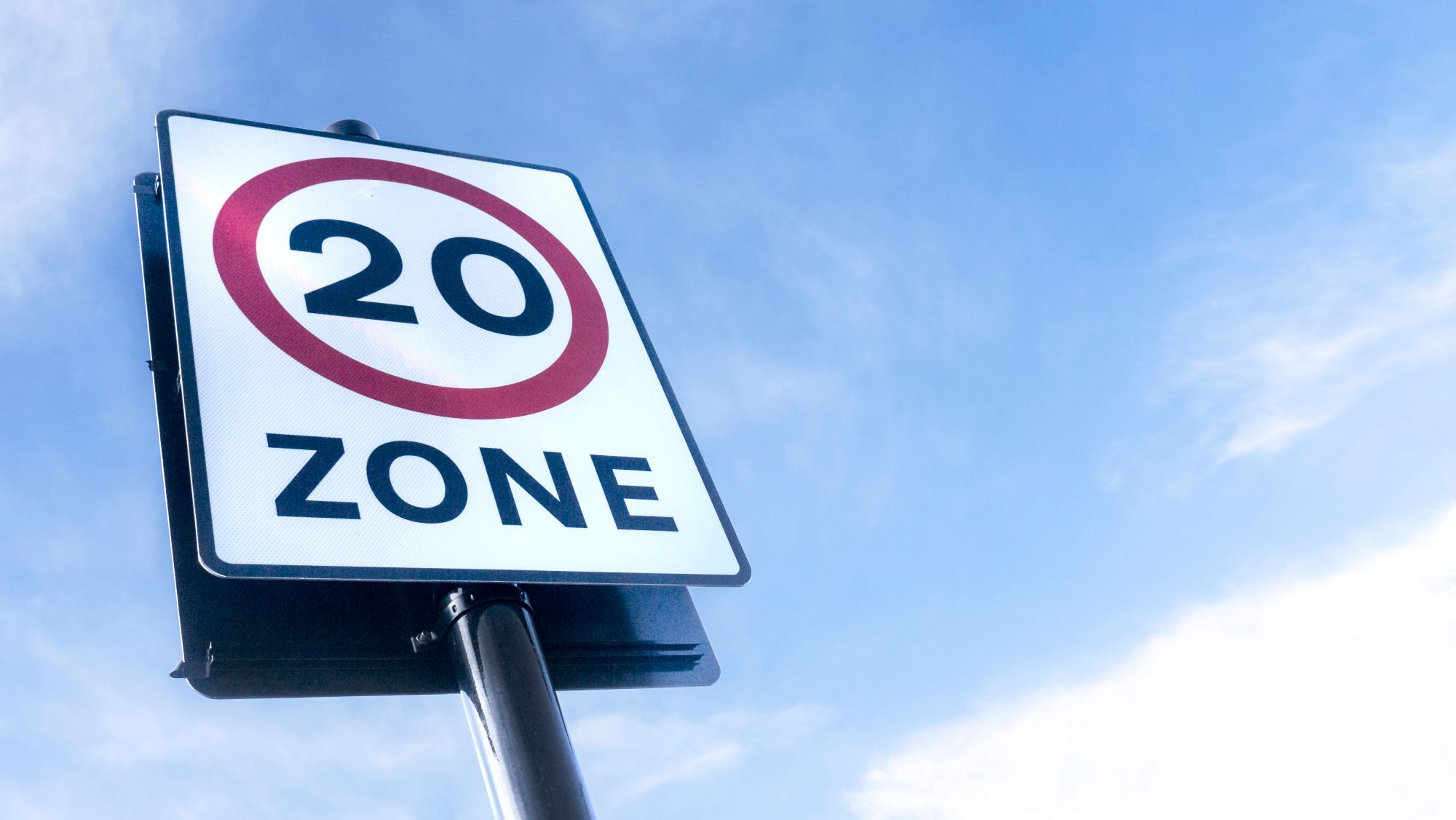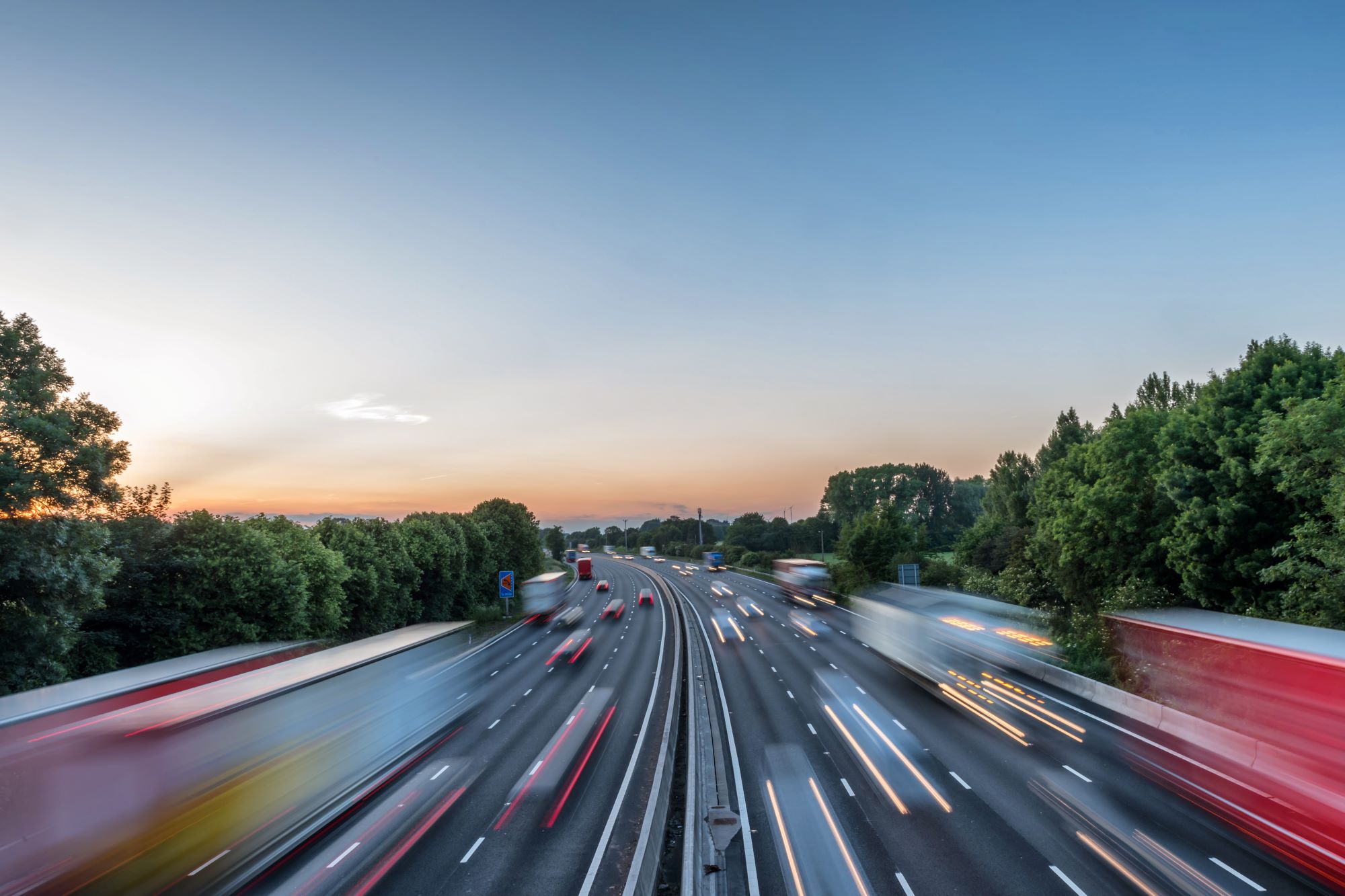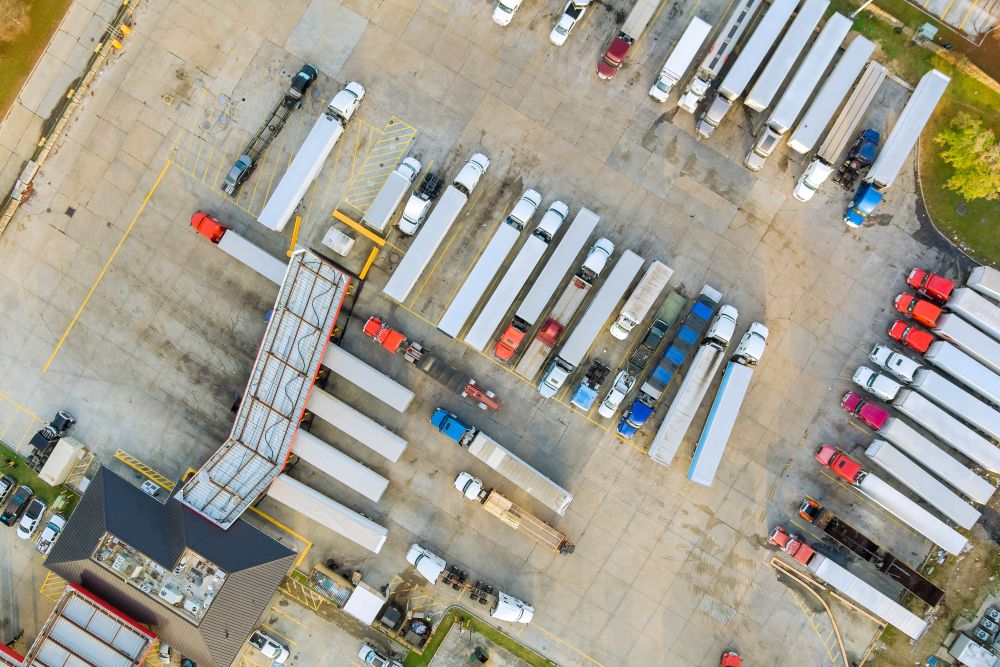
Susie Jones
Какви са последиците от ограниченията на скоростта до 20 мили в час за автопарковете?
Създаден: 16.04.2025
•
Актуализирано: 16.04.2025
През 2023 г. 188 тежкотоварни автомобили са участвали в сблъсъци, които са довели до смъртни случаи, което е спад спрямо 2022 г., но въпреки това е тревожна статистика. Тези произшествия биха могли да са резултат от няколко фактора, като например умора на водача, лоша поддръжка на превозното средство, метеорологични условия или действия на други участници в движението. Данните на благотворителната организация за пътна безопасност Brake обаче сочат, че при 58% от смъртните случаи, свързани с пътнотранспортни произшествия, скоростта е отчетена като фактор за пътна безопасност. В този блог ще разгледаме как въвеждането на ограничения на скоростта от 20 мили в час може да повлияе на работата на автопарка и да намали броя на смъртните случаи.
Къде се случват произшествията с тежкотоварни автомобили?
Според EROS само 10 % от сблъсъците на тежкотоварни автомобили са станали на магистрала - останалите 90 % са по-вероятни на градски или селски път. Селските пътища поставят водачите на камиони пред тесни пространства, остри завои и взаимодействия с уязвими участници в движението като велосипедисти и пешеходци, което увеличава вероятността от произшествия. Градските райони представляват по-голям риск за шофьорите на камиони поради по-високата плътност на трафика, честите спирания, активността на пешеходците и сложните пътни схеми - в комбинация с непредвидимостта на градските пътища ги прави по-опасни за водачите на камиони.
Въздействието на зоните с 20 мили в час.
Данните, публикувани от Правителството на Уелс, показват, че през 2024 г. жертвите по градските пътища са със 100 по-малко в сравнение със същия период на 2023 г., преди да бъде въведено ограничението на скоростта от 20 мили в час в градските зони.
Схемата се подкрепя от организации като Brake и Cycling UK, а сега специалистите по управление на автопаркове FleetCheck насърчават транспортните компании да подкрепят схемата. Те твърдят, че преминаването от 30 км/ч към 20 км/ч ще има минимално въздействие върху ефективността на автопарка и категорично подкрепят идеята, че това би спасило човешки животи всяка година.

Какво мислят автопарковете и шофьорите за ограничението на скоростта от 20 мили в час?
Според FleetCheck операторите на транспортни средства изпитват смесени чувства към инициативата. Някои от тях смятат, че промените пречат на ефективността, като твърдят, че по-ниските ограничения на скоростта могат да принудят някои автопаркове да намалят броя на доставките, които могат да извършат за даден период.
Шофьорите на страниците на SNAP в социалните медии изразиха силни чувства към предложението. Един шофьор коментира:
"Кой ще подкрепи повече зони с 20 мили в час? Проблемът е в целия стандарт на шофиране. Откакто излязохме от затвора, стандартът на шофиране е диаболичен, включително за леки коли, микробуси и камиони."
Настроенията в социалните мрежи останаха същите, като мнозина не подкрепиха промяната.
Ползите от повече зони с 20 мили в час.
Зоните с намалена скорост предлагат няколко предимства за водачите на камиони.
По-ниските скорости подобряват времето за реакция и намаляват спирачния път, което улеснява избягването на сблъсъци - особено в градските райони.
При намалени ограничения на скоростта е по-вероятно камионите да се износват по-малко.
Препятствията, с които могат да се сблъскат компаниите за автопаркове.
Както беше споменато, някои компании, занимаващи се с автопаркове, се опасяват, че по-ниските ограничения на скоростта могат да намалят броя на доставките, които могат да извършат за даден период. Фирмите от автопарка могат да се сблъскат и със следните предизвикателства:
Удължаване на времето за пътуване: засягащо чувствителни към времето доставки, което се отразява на планирането и очакванията на клиентите.
Планиране на маршрути: на компаниите може да се наложи да коригират маршрутите, за да вземат предвид по-ниските скорости.
Съответствие: инвестирането в допълнително обучение на водачите, за да се гарантира спазването на новите ограничения на скоростта, ще бъде от решаващо значение.
Въпреки че тези проблеми могат да поставят допълнителни предизвикателства пред компаниите, занимаващи се с автопаркове, много от тях могат да бъдат управлявани превантивно. Мнозина твърдят, че дългосрочните ползи за безопасността надхвърлят пречките.

Цифрите говорят сами за себе си.
В преработена кампания, озаглавена Опасни магистрали, SNAP определи най-опасните места в GB. Ние навлизаме по-дълбоко, за да открием кои пътища биха могли да се възползват от намалено ограничение на скоростта.
SNAP установи, че най-опасните пътища са в Югоизточна Европа. Кент има най-опасните пътища във Великобритания и предлага цел за нула смъртни случаи по пътищата на магистралната мрежа на Кент до 2050 г. Кои пътища са най-тревожни?
А254: Кратък път с дължина само четири мили, но през 2018 г. е обявен за най-рисковия маршрут във Великобритания. В доклада се посочва участъкът от А254 между кръстовището на А28 при Маргейт и кръстовището с А255 край Рамсгейт. Ограничението на скоростта в този участък варира между 30 и 40 мили в час - населените места и интензивният транспортен поток от пристанище Дувър правят този път особено опасен за велосипедисти, пешеходци и други участници в движението. Може ли този участък от пътя да се възползва от по-бавни ограничения на скоростта?
А252: Известен с високия си брой произшествия, А252 е с дължина 8,7 мили. През 2020 г. започва работа за намаляване на броя и тежестта на произшествията, като сред промените е и намаляването на скоростта от 60 на 50 мили в час в този участък, освен там, където са в сила по-ниски ограничения. Дали обаче това е достатъчно, за да се отърве пътят от репутацията си на един от най-лошите във Великобритания?
Съри и Есекс също са начело на списъка и имат общо 30 378 произшествия през последните пет години. Високият брой произшествия в Съри може да се отдаде на смесицата от населени места и селски пътища. Близостта му до Лондон и големите магистрали е довела до повече сблъсъци.
Автомагистрала М25: Известна още като "Лондонската орбитална магистрала", магистралата М25 е един от най-натоварените пътища във Великобритания и същевременно е вторият по дължина околовръстен път в Европа. Между 2007 и 2016 г. са регистрирани 7 673 произшествия и 80 смъртни случая. Като магистрала от решаващо значение, регулирането на скоростта до 20 мили в час би било абсурдно. Дали обаче М25 би имала полза от зони с ограничена скорост?
A3: Пътят A3, който е с дължина 67 мили, може да бъде предизвикателство за шофиране поради големия трафик, ограниченията на скоростта и участъците с лоши пътни условия.
Често задавани въпроси
Какво е максималното ограничение на скоростта за камиони?
Шофьорите на камиони трябва да спазват строги правила за скоростта. Тези ограничения са въведени, за да се отчетат размерът, теглото и спирачният капацитет на камиона.
Еднопосочни пътища: Максималната скорост на камион над 7,5 тона е ограничена до 50 мили в час.
Двулентови пътища: 60 мили в час е максималната разрешена скорост за камион над 7,5 тона.
Магистрали: Шофьорите на камиони не трябва да превишават 60 км/ч по магистрала.
Наредби за ограничаване на скоростта в Обединеното кралство В Обединеното кралство на всеки камион трябва да се монтират устройства за ограничаване на скоростта, които ограничават максималната скорост, с която може да се движи автомобилът.
Законови изисквания в Обединеното кралство: Всички камиони над 3,5 тона трябва да имат ограничител на скоростта, настроен на 56 мили в час.
Как работят: Ограничителите на скоростта ограничават подаването на гориво към двигателя, когато автомобилът достигне предварително зададена скорост, като гарантират, че водачите няма да могат да я надвишат.
Нужен ли е ограничител на скоростта на частен камион?
Частният камион не се нуждае от ограничител на скоростта, освен ако не се използва за търговски цели. Трябва да декларирате дали вашето превозно средство е освободено от необходимостта от ограничител на скоростта, когато го предавате за MOT, като попълните [формуляр за декларация за ограничител на скоростта] (https://www.gov.uk/government/publications/hgv-speed-limiter-exemption-declaration-form).



